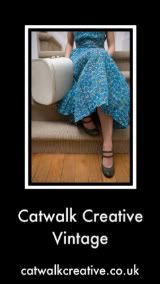As a result, there's a real lack of detailed descriptions of everyday men's wear since it was usually considered of no importance or relevance. Which is why this short piece, 'Frenchmen's Fashions,' published in the seventh Saturday Book in 1947, is such a treasure. Written by Honor Tracy, it provides a precious snapshot of men's fashions in Paris in the immediate post-war period.
Honor Tracy (1913-1989) was not a fashion correspondent but a well-known journalist and writer. She had served during the Second World War in the British Women's Auxiliary Air Force from 1939 to 1941 in the intelligence department before joining the British Ministry of Information from 1941 to 1945. As well as working as a columnist and foreign correspondent for the The Observer, she wrote for the Sunday Times and the BBC and published several books, both novels and travelogues. We must be grateful to her for directing her shrewd, wry and often amused eye upon a subject that might well have seemed frivolous or irrelevant in the context of post-war devastation in Europe. Since this was published in 1947 it is likely to have been written in 1946, only a year after the end of the war.
Honor Tracy begins her article by proposing that dress is an expression of the self, and that those who might seem to be dressed inappropriately - an example she gives is "a very fat lady in a scarlet dress" - are in fact expressing the self they imagine or wish themselves to be. She notes that in most of Western Europe, this "romantic urge" in dressing is confined to women, with men content to disappear into the background, preferring conformity to the unconventional. I'll let her take over from here:
It is pleasant then to find the men of Paris standing out against this tradition and clothing themselves in a manner which not only would appear to express some inner and secret self but which cannot fail to make an ineffaceable impression on all who behold it. And here is a curious paradox: while Parisian women are said to be the best dressed in the world and it is taken for granted in Paris that feminine apparel is a serious affair, it is the male attire in this city which catches and rivets the eye of the stranger as he sits in a café and sees the world hurrying past: and these effects are produced, woman’s thunder stolen, with no apparent effort, with even a kind of nonchalance as admirable as it is mysterious.
For men are not, like women, bullied and nagged by the great houses of Parisian couture. They have no tradition and no accepted standards to guide them. At the most, the tailor’s sheets may let fall a hint or two from time to time; under the sketch of a man in canvas trousers, rope sandals, striped jacket reaching to knee and straw boater draped with constrasting scarf, for example, we may find these words of restrained advice: ‘a sailing holiday along the Breton coast calls for the appropriate outfit.’ A friendly suggestion, no more: should the holiday-maker prefer to set sail in pleated shorts and jumper with a border-pattern of shrimps or lighthouses, no eyebrows will be raised. And it is precisely this freedom which gives to the male costumes their freshness and excitement: while none can foresee how they will finally appear, few, once they catch sight of them, would allow a single item to be changed.
On the first warm day of the year a man was seen strolling up the Champs Elysées. He was wearing white stockinet plus fours with a green alpaca jacket and butterfly tie. Nothing very remarkable in that, perhaps, but with a little stroke of genius he had crowned the ensemble with a bowler hat. This gift for detail which seems surprising at first but then is seen to be inevitable, is the mark of the true artist, such as it is the glory of France to produce in great numbers.
One characteristic of French male costuming is its great fluidity, its restless changeability, that capriciously and wilfully rejects all that went immediately before. To take one example, the Frenchman of our mothers’ day was noted for wide, baggy trousers that nestled about his pumps or elastic-sided boots in concertina folds: if the illustrated papers of the time may be believed, it was almost a national costume: whereas James Laver says, ‘nothing marks the modern Frenchman more than the comparative tightness of his trousers.’ And not merely trousers in the limited sense, either, but breeches, shorts and plus-fours, the last being especially restricted in width although, as if in compensation, descending to within six inches of the ground. And it is this restlessness above all which betrays the romantic conception that he has of himself, for while in England striking innovations are made only by cranks or cads, in France a constant search goes on for something new: no, the Frenchman appears to say fretfully to himself as he surveys his reflection in the glass, this is not quite the thing yet, it is not me.
In the piping days of 1938, the note was of controlled exuberance. Overcoats were cut lavishly and waisted neatly, something along the lines of a robe de style, shoes were gay and multi-coloured, jackets were immensely tucked and pleated and flounced: favourite shades for summer and winter alike ranged from lilac to vert pomme.
The idea behind it was plain: in spite of the unhappy rivalries and dissensions between the two countries, the Parisian of the ‘thirties wished to look as much as possible like an English gentleman. His shoes were spoken of in catalogues as for the footing or the trotting. Extremists came to London for their clothes, although increasingly they were apt to hand them over to their own tailors for the special finishing touch. They went to their offices in hairy, shapeless tweeds, which smothered them in mild weather or became waterlogged after a five-minute shower, and which they would always describe as ‘très pratique.’
As vivid as the pictures Honor conjures up are, she appears to have set up two competing impulses in French men's fashions: a carefree and exuberant experimentalism in dress, not hidebound by convention as their contemporaries over the Channel were (who might well have considered some of the outfits she describes as outré, bordering on the effeminate), and at the same time an urge to copy those conventional Englishmen. To be fair, she later clarifies these contradictory elements, describes in detail the Frenchman's preoccupation with correct, 'classic' dress, and sums up the "French male costume at its best" as "a nice blend of reason and fantasy, harmonizing the wishes of the individual with what he conceives to be the demands of the community."
It might also have been useful to have some indication of the social class of the stylish gentlemen she is discussing, but I'm sure it's fair to assume we are not talking about working class men, especially given those "extremists" who patronised London tailors. Of course, its ridiculous to gripe about this minor oversight - we're lucky to have this account at all. And Honor has many more fascinating observations to make as she turns to the 'present day' in Paris:
Today the scene has changed completely. The first impression is one of grimness and austerity. The ordinary Frenchman is now dressed in a vile garment known as a canadienne, or shapeless reefer jacket with fur collar, knickerbockers, white German socks and hobnailed boots, with or without leather gaiters buttoned to the knee. So dressed he goes to work, to dine or to the cinema, or strolls along the boulevards looking the women critically up and down.
Another deplorable feature of post-war fashion is the peaked cap for civilians: this, however, is so far confined to districts like Strasbourg, St Denis and La Vilette, and goes with a grubby raincoat and a toothbrush moustache. Small boys wear rabbit skins sewn together when it is cold and dungarees or battle-dress when it is warm.
Here, again, the question is, what are they aiming for? Do they enjoy looking like that? Do any group of people on the face of this globe wish to look as they mostly do at present, or, for that matter, do anything else as they would like? Textiles are short in France and, since – a grave pity in the view of most – the French do not export their male fashions, very few are being made. Further, a great factor in French life this year has been the American war surplus: a canadienne may be the only jacket available. A Frenchman may be no more delighted to wear it than he is to go the Opera in a jeep, but possibly he has no choice.
 |
| I'm adding this cautiously, but it really was too good to miss. Jean Paul Sartre wearing one of those "vile" canadiennes in Paris in 1946, photograph by Henri Cartier Bresson. Source. |
It would be ungenerous, then, to complain that Frenchmen look like people dressed in American war surplus: and it would be false as well, for their remarkable achievement is to look somehow like people coming straight from the maquis. They have the air of men who have buried their weapons in the hills and have come flocking to town to rally at the Vel. D’Hiv. Probably, they know this and are pleased by it, for resistance, at one moment de rigeur, then again rather bad form, now has all the chic of far-off hopeless things, like the cause of Bonny Prince Charlie.I have to jump in again here because this is too good! Is this the first sighting of a post-war 'rebel chic'? There's no suggestion here that this is trend adopted solely by the young, as you might assume. Clearly it was a matter of expedience rather than choice - there simply weren't adequate clothing supplies to provide a choice - but it was the manner in which the American military surplus was worn, with a suitable swagger intended to associate the wearer with the rebellious heroes of the resistance.
American goods had a huge impact on Europe after the war, and not just the huge quantities of their military surplus which provided cheap and practical clothing either. Americans donated tons of second-hand civilian clothing, which were shipped over and distributed in local markets in some of the most devastated areas in Europe. In Poland this gave rise to the phenomenon of the 'Bikini Boys,' who proudly wore flamboyant American leisure wear, flourescent-bright socks and the luridly hand-painted ties which earned them their nickname. I wonder if that civilian clothing reached Paris too? You'd expect the Zazous to have feasted upon it!
There's so many interconnected strands you can pull from this article, forgive me. Let's get back to it:
Not that goods are ever displayed in shops as ‘très resistant’ or ‘bien maquisard’ or that male fashion papers ever give the man in the street any tips on the subject. Adam, which is a sort of male Vogue, continues to live in a world of its own, inhabited by enormous blond men with steely blue eyes and the shoulders of a gorilla, bronzed by a lamp, scented with Aroma 3 and dressed in dainty smokings of midnight blue, belonging to Clubs such as Magdalen College or Rules and wearing whatever old school tie happens to tone with their complexion. But the Frenchman is above all a realist: since he knows well he can never be a blond gorilla with eyes of steel he makes no especial effort to look like one; instead, he prefers to give the impression that he has just blown up a railway bridge.Lovely stuff! This is street style. The fashion media didn't even acknowledge it. Sorry, I'll shut up again:
If the style maquis is the most common in Paris at the moment, next after it comes the style marché noir: and this, as befits an organization as vast and as ramified as the French black market, rings a good many changes. In its simplest form, it merely consists of wearing clothes that are much too tight. Jackets no longer button, trousers creak anxiously as the owner sits down: these are worn by the small fry, by the clerks, petty officials, grocers, concièrges and mechanics who are making enough money to eat as they never ate before, but not enough to buy new clothes. They are to be found smiling over the menu in those comfortable homey little bistros in the centre of Paris, where the price of dishes is not marked and where the best dishes are not even written down. After them, are the people who could buy themselves a dozen new suits if they chose but, feeling that life is uncertain and the future shrouded in darkness, prefer to put their money into things that will not only last but, at a pinch, can be negotiated: gems flash from their fingers and neckties, their ladies are loaded with diamonds in such profusion they can hardly set one foot before the other. And finally come those kings and emperors who, having weathered the occupation, the liberation and the purge, pursue their way with a serene confidence in the future of France and are modestly content with the best of everything.At last, some indication of class in relation to dress, which gladdens my nitpicking historian heart. This must have been a period of great upheaval and uncertainty, when everything was up in the air and people were waiting to see how all those pieces fell. It looks like some of those pieces had already fallen by the time this was written: the super rich, as ever, remained in their privileged bubble.
In general, this cramping influence of economics upon style is to be deprecated and all must look forward to the time when fancy may blossom again as in the palmy days between the wars.And there I will leave it. I make no apology for quoting Honor Tracy's article at length, because it really is valuable first-hand testimony from someone who was apparently familiar with pre-war Paris as well as being 'on the ground' at a crucial moment in the aftermath of the war.
However, it's still an outsider's account, and who knows what subtleties she might have missed from her (presumably) middle-class English perspective. She mourns the loss of the Frenchman's flamboyance, but fails to see that it might be the start of something new. Instead, she hopes for a return to the pre-war "fancy" of frivolous and romantic dress. I have some sympathy here - honestly, I'd love to see some photographs of her pre-war exemplars of male Parisian fashion in lilac and apple green - but I can also see the rugged appeal of dressing like a freedom fighter by adopting the cast-offs of the liberating forces.
As for those "vile" canadiennes, A.P.C. produced a rather creditable version last season.







1 comment:
I just take a peek and I discovered your post. I find it interesting and cool. I will refer this to my friend. Thank you.
Michelle
Post a Comment